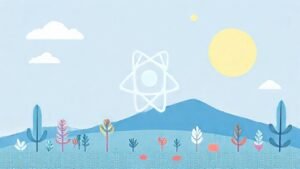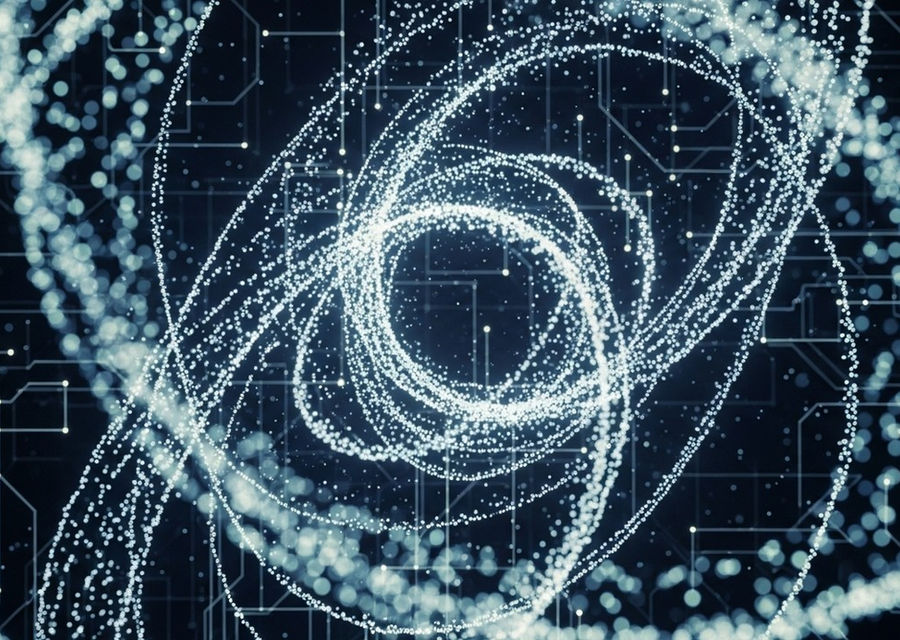Understanding Quantum Superposition: A Deep Dive
- THE MAG POST

- Aug 11
- 12 min read

Exploring quantum superposition? You're in for a fascinating ride! This principle states that a quantum system can exist in multiple states simultaneously. Think of it like a coin spinning in the air—it's neither heads nor tails until it lands. We'll unpack the math, explore Schrödinger's cat, and discuss how quantum superposition powers quantum computing and cryptography. So, let's dive into the strange and wonderful world of quantum superposition and see what makes it so special!
Embarking on the journey of understanding quantum superposition is akin to stepping into a realm where the ordinary laws of physics take a backseat. This principle, a cornerstone of quantum mechanics, describes a situation where a quantum system, such as an electron, exists in multiple states simultaneously. Imagine a coin spinning in the air; it's neither heads nor tails until it lands. Similarly, a quantum particle can be in multiple states at once until measured, at which point it collapses into a single, definite state. This concept challenges our classical intuitions, where objects have definite properties, regardless of whether we observe them. Quantum superposition is not just a theoretical curiosity; it underpins many quantum technologies, including quantum computing and quantum cryptography, promising revolutionary advancements in these fields. The implications of quantum superposition extend beyond technology, prompting deeper philosophical questions about the nature of reality and observation.
Unveiling the Essence of Quantum Superposition
To truly grasp quantum superposition, it's essential to delve into the mathematical formalism that describes it. In quantum mechanics, the state of a system is represented by a wave function, which is a mathematical function that encodes all the information about the system. When a system is in a state of quantum superposition, its wave function is a linear combination of multiple eigenstates. Each eigenstate corresponds to a specific value of a measurable property, such as position or momentum. The coefficients in the linear combination determine the probability of measuring each particular value. This probabilistic nature is a hallmark of quantum mechanics, contrasting with the deterministic predictions of classical physics. The act of measurement forces the system to "choose" one of the possible states, a process known as wave function collapse. Understanding this mathematical framework is crucial for anyone seeking to explore the depths of quantum phenomena and their potential applications.
The concept of quantum superposition is often illustrated using the famous thought experiment known as Schrödinger's cat. Imagine a cat inside a closed box, along with a radioactive atom, a Geiger counter, a hammer, and a vial of poison. If the radioactive atom decays, the Geiger counter triggers the hammer, which breaks the vial, releasing the poison and killing the cat. According to quantum superposition, until the box is opened and the system is observed, the cat is in a state of being both alive and dead simultaneously. This thought experiment highlights the counterintuitive nature of quantum superposition and the role of observation in determining the state of a quantum system. While Schrödinger's cat is a hypothetical scenario, it serves as a powerful metaphor for understanding the bizarre and fascinating world of quantum mechanics. The experiment underscores the fundamental differences between the quantum world and our everyday experiences.
One of the most compelling applications of quantum superposition lies in the field of quantum computing. Unlike classical computers, which store information as bits representing either 0 or 1, quantum computers use quantum bits, or qubits. Thanks to quantum superposition, a qubit can exist in a state that is a combination of both 0 and 1 simultaneously. This allows quantum computers to perform calculations that are impossible for classical computers, opening up new possibilities for solving complex problems in areas such as drug discovery, materials science, and cryptography. Quantum algorithms, such as Shor's algorithm for factoring large numbers and Grover's algorithm for searching unsorted databases, leverage quantum superposition to achieve exponential speedups compared to their classical counterparts. The development of practical quantum computers is a major technological challenge, but the potential rewards are enormous.
Beyond quantum computing, quantum superposition plays a crucial role in quantum cryptography, a field that aims to provide secure communication channels. Quantum key distribution (QKD) protocols, such as BB84, rely on the principles of quantum superposition and quantum entanglement to ensure that any attempt to eavesdrop on a communication channel will inevitably introduce detectable disturbances. This allows the communicating parties to detect the presence of an eavesdropper and discard the compromised key. Quantum cryptography offers a fundamentally different approach to security compared to classical cryptography, which relies on the computational difficulty of certain mathematical problems. With the increasing threat of cyberattacks, quantum cryptography is poised to become an essential tool for protecting sensitive information in the digital age. The unique properties of quantum superposition make it an indispensable resource for securing communications.
Delving Deeper into Quantum Superposition Principles
The principle of quantum superposition is not limited to individual particles; it can also apply to macroscopic objects under certain conditions. However, as the size of an object increases, the effects of quantum superposition become increasingly difficult to observe due to a phenomenon known as decoherence. Decoherence arises from the interaction of a quantum system with its environment, which causes the quantum superposition to rapidly degrade. Overcoming decoherence is a major challenge in the development of quantum technologies, as it limits the coherence time of qubits and reduces the fidelity of quantum operations. Researchers are exploring various strategies to mitigate decoherence, such as isolating quantum systems from their environment and using error correction techniques. Understanding and controlling decoherence is crucial for realizing the full potential of quantum superposition in practical applications.
One of the most intriguing aspects of quantum superposition is its connection to the measurement problem in quantum mechanics. The measurement problem arises from the fact that the act of measurement seems to play a special role in determining the state of a quantum system. Before measurement, the system exists in a quantum superposition of multiple states, but after measurement, it collapses into a single, definite state. The question of why and how this collapse occurs is a subject of ongoing debate among physicists and philosophers. Various interpretations of quantum mechanics have been proposed to address the measurement problem, including the Copenhagen interpretation, the many-worlds interpretation, and the consistent histories interpretation. Each interpretation offers a different perspective on the nature of reality and the role of observation in shaping it. The measurement problem remains one of the most fundamental and challenging questions in quantum mechanics, highlighting the profound implications of quantum superposition.
The concept of quantum superposition has also found its way into popular culture, often portrayed in science fiction movies and books. While these portrayals are often exaggerated or inaccurate, they can spark interest in quantum mechanics and inspire further exploration of its mysteries. For example, the idea of parallel universes, where each universe represents a different possible outcome of a quantum measurement, is often associated with the many-worlds interpretation of quantum mechanics. While the existence of parallel universes remains speculative, the concept of quantum superposition provides a theoretical basis for exploring such possibilities. The intersection of science and fiction can be a powerful tool for promoting scientific literacy and encouraging critical thinking about the nature of reality. The enduring fascination with quantum superposition underscores its profound impact on our understanding of the universe.
The experimental verification of quantum superposition has been a major triumph of modern physics. Numerous experiments have demonstrated the existence of quantum superposition in various systems, ranging from individual atoms and photons to macroscopic objects. These experiments provide strong evidence for the validity of quantum mechanics and its predictions. For example, experiments with superconducting circuits have shown that it is possible to create and manipulate quantum superposition states in macroscopic systems. These experiments pave the way for the development of quantum technologies that can harness the power of quantum superposition to solve real-world problems. The ongoing quest to explore and exploit quantum superposition continues to drive innovation in quantum science and technology.
As our understanding of quantum superposition deepens, so too does our appreciation for the profound implications of quantum mechanics. This principle challenges our classical intuitions about the nature of reality and opens up new possibilities for technological innovation. From quantum computing to quantum cryptography, quantum superposition is poised to revolutionize various fields and transform our world. The ongoing exploration of quantum superposition promises to reveal even more surprises and insights into the fundamental laws of the universe. The journey into the quantum realm is far from over, and the potential rewards are immense.
Practical Applications of Quantum Superposition in Modern Technology
One of the most promising practical applications of quantum superposition is in the development of quantum sensors. Quantum sensors leverage the extreme sensitivity of quantum systems to external stimuli to achieve unprecedented levels of precision in measurements. For example, quantum sensors based on quantum superposition can be used to measure magnetic fields, gravitational fields, and time with unparalleled accuracy. These sensors have potential applications in various fields, including medical imaging, navigation, and fundamental physics research. The ability to measure these quantities with such high precision opens up new possibilities for scientific discovery and technological innovation. The unique properties of quantum superposition make it an indispensable resource for advancing sensor technology.
Another area where quantum superposition is making a significant impact is in the field of quantum materials. Quantum materials are materials that exhibit exotic quantum properties, such as quantum superposition and quantum entanglement. These materials have the potential to revolutionize various technologies, including electronics, energy storage, and catalysis. For example, topological insulators are a class of quantum materials that exhibit quantum superposition on their surfaces, leading to unique electronic properties. Researchers are actively exploring the potential of quantum materials to create new devices and technologies with enhanced performance and functionality. The exploration of quantum superposition in materials science is a rapidly growing field with immense potential.
Quantum superposition also plays a crucial role in quantum simulation, a technique that uses quantum computers to simulate the behavior of complex quantum systems. Quantum simulation has the potential to revolutionize various fields, including drug discovery, materials science, and fundamental physics research. By simulating the behavior of molecules and materials at the quantum level, researchers can gain insights into their properties and design new materials with desired characteristics. Quantum simulation is particularly useful for studying systems that are too complex to be accurately modeled using classical computers. The ability to harness quantum superposition for simulation purposes opens up new avenues for scientific discovery and technological innovation.
The development of quantum repeaters is another area where quantum superposition is essential. Quantum repeaters are devices that can extend the range of quantum communication channels by overcoming the limitations imposed by signal loss and decoherence. These repeaters rely on the principles of quantum superposition and quantum entanglement to transmit quantum information over long distances. Quantum repeaters are crucial for building a global quantum internet, which would enable secure communication and distributed quantum computing on an unprecedented scale. The realization of a quantum internet would have profound implications for various fields, including finance, healthcare, and national security. The unique properties of quantum superposition make it an indispensable resource for advancing quantum communication technology.
In conclusion, quantum superposition is a fundamental principle of quantum mechanics that has profound implications for our understanding of the universe and for the development of new technologies. From quantum computing to quantum sensors, quantum superposition is poised to revolutionize various fields and transform our world. The ongoing exploration of quantum superposition promises to reveal even more surprises and insights into the fundamental laws of nature. As we continue to unravel the mysteries of the quantum realm, we can expect to see even more innovative applications of quantum superposition emerge in the years to come.
Challenges and Future Directions in Quantum Superposition Research
Despite the remarkable progress in understanding and harnessing quantum superposition, significant challenges remain. One of the most pressing challenges is the issue of decoherence, which limits the coherence time of qubits and reduces the fidelity of quantum operations. Overcoming decoherence is crucial for building practical quantum computers and other quantum technologies. Researchers are exploring various strategies to mitigate decoherence, such as isolating quantum systems from their environment and using error correction techniques. The development of robust quantum error correction codes is a particularly important area of research. Addressing the challenges posed by decoherence is essential for realizing the full potential of quantum superposition.
Another challenge in quantum superposition research is the scalability of quantum systems. Building quantum computers with a large number of qubits is a major technological hurdle. As the number of qubits increases, so too does the complexity of controlling and manipulating them. Researchers are exploring various qubit technologies, including superconducting qubits, trapped ion qubits, and photonic qubits, each with its own advantages and disadvantages. The development of scalable qubit architectures is crucial for building quantum computers that can solve real-world problems. Overcoming the challenges of scalability is essential for advancing the field of quantum computing and harnessing the power of quantum superposition.
The development of new quantum algorithms is also an important area of research. While quantum algorithms such as Shor's algorithm and Grover's algorithm have demonstrated the potential for exponential speedups compared to classical algorithms, many problems remain for which no efficient quantum algorithms are known. Researchers are actively exploring new quantum algorithmic techniques and searching for problems that can be efficiently solved using quantum computers. The discovery of new quantum algorithms would greatly expand the range of applications for quantum computing and further demonstrate the power of quantum superposition. The ongoing quest for new quantum algorithms is a driving force in the field of quantum computing.
The exploration of quantum superposition in biological systems is another exciting frontier in quantum research. While the role of quantum mechanics in biology is still not fully understood, there is growing evidence that quantum effects, such as quantum superposition and quantum entanglement, may play a role in various biological processes, such as photosynthesis and enzyme catalysis. Researchers are using experimental and theoretical techniques to investigate the potential role of quantum mechanics in these processes. Understanding the interplay between quantum mechanics and biology could lead to new insights into the fundamental mechanisms of life and inspire new technologies. The exploration of quantum superposition in biological systems is a rapidly growing field with immense potential.
In conclusion, the future of quantum superposition research is bright, with many exciting opportunities and challenges ahead. As we continue to deepen our understanding of quantum superposition and develop new technologies that harness its power, we can expect to see even more remarkable advances in the years to come. From quantum computing to quantum sensors, quantum superposition is poised to revolutionize various fields and transform our world. The ongoing quest to explore and exploit quantum superposition will continue to drive innovation in quantum science and technology for decades to come.
Ethical and Societal Implications of Quantum Superposition Technologies
As quantum superposition technologies continue to advance, it is essential to consider their ethical and societal implications. Quantum computing, in particular, has the potential to disrupt various industries and transform our world in profound ways. However, it also raises concerns about security, privacy, and equity. For example, quantum computers could be used to break current encryption algorithms, potentially compromising sensitive data. It is crucial to develop new cryptographic techniques that are resistant to quantum attacks. Addressing the ethical and societal implications of quantum superposition technologies is essential for ensuring that they are used responsibly and for the benefit of all.
The potential impact of quantum superposition technologies on employment is another important consideration. As quantum computers become more powerful, they may automate tasks that are currently performed by humans, potentially leading to job displacement. It is crucial to prepare for these changes by investing in education and training programs that equip workers with the skills they need to succeed in the quantum age. Additionally, it is important to consider policies that can mitigate the negative impacts of automation and ensure that the benefits of quantum superposition technologies are shared broadly. Addressing the potential impact on employment is essential for ensuring a just and equitable transition to a quantum-powered economy.
The accessibility of quantum superposition technologies is another important ethical consideration. Quantum computers are currently very expensive and require specialized expertise to operate. It is crucial to ensure that these technologies are not only available to wealthy nations and corporations but also to developing countries and smaller organizations. This requires investing in research and development, promoting open-source software and hardware, and fostering international collaboration. Ensuring equitable access to quantum superposition technologies is essential for preventing the creation of a quantum divide and for promoting global development.
The potential for misuse of quantum superposition technologies is also a concern. Quantum computers could be used for malicious purposes, such as developing new weapons or launching cyberattacks. It is crucial to establish ethical guidelines and regulations that govern the development and use of these technologies. Additionally, it is important to foster a culture of responsible innovation within the quantum community. Addressing the potential for misuse is essential for ensuring that quantum superposition technologies are used for peaceful and beneficial purposes.
In conclusion, the ethical and societal implications of quantum superposition technologies are far-reaching and complex. It is crucial to address these issues proactively to ensure that these technologies are used responsibly and for the benefit of all. By considering the ethical, social, and economic impacts of quantum superposition technologies, we can help shape a future in which these technologies are used to create a more just, equitable, and sustainable world. The ongoing dialogue about the ethical and societal implications of quantum superposition is essential for guiding the development and deployment of these transformative technologies.
From our network :





















































Comments